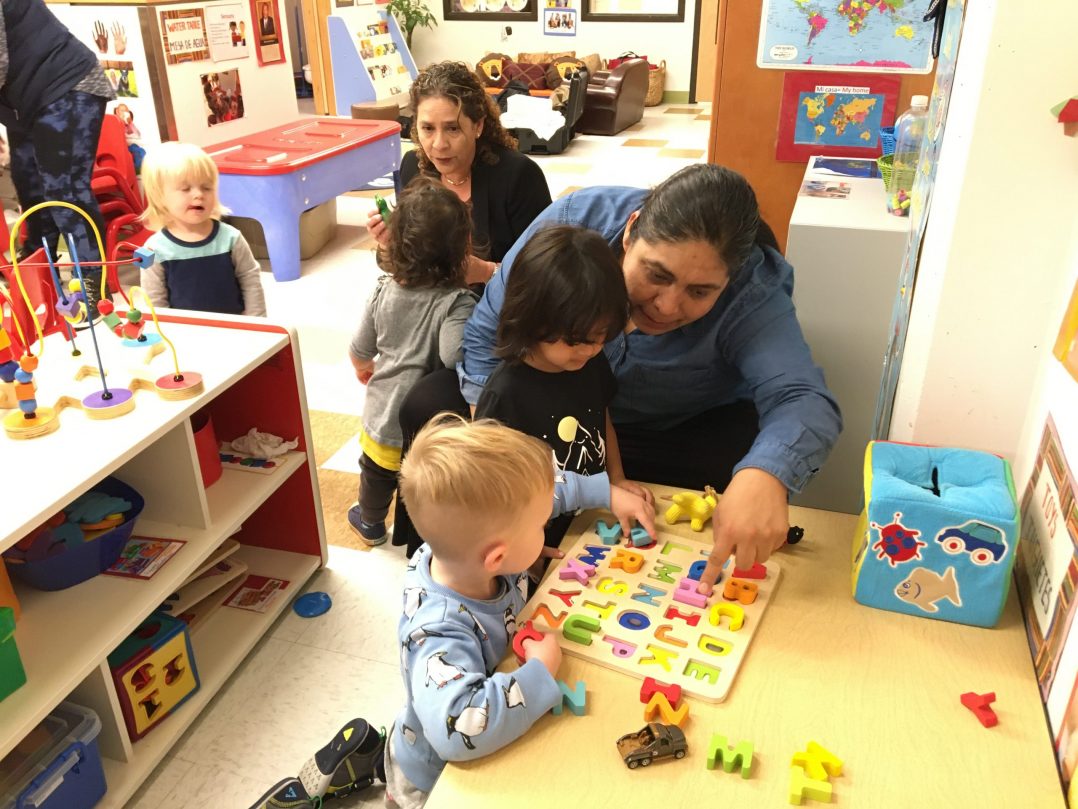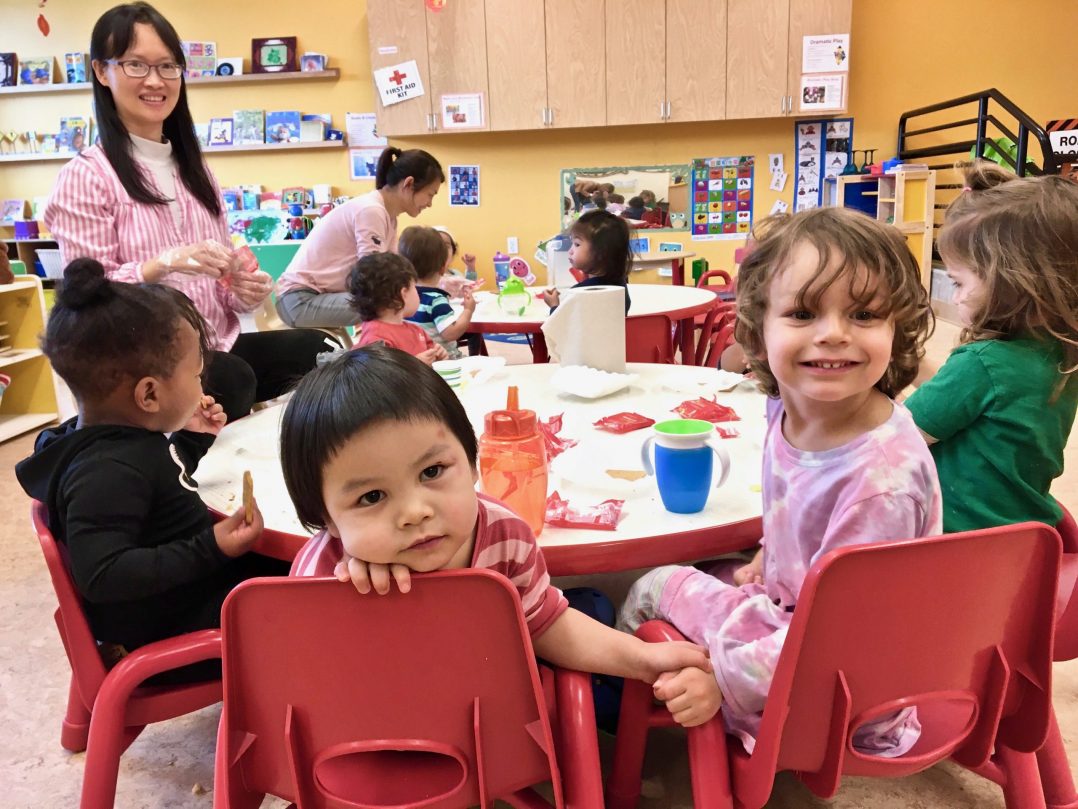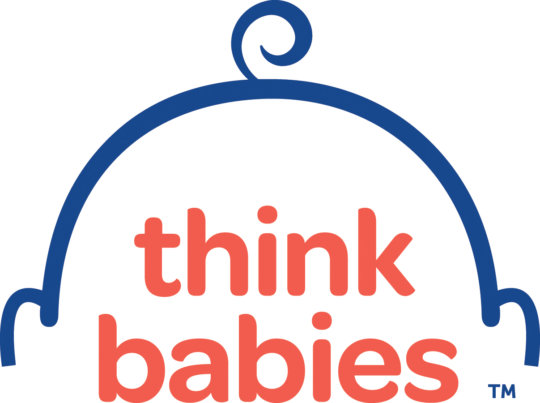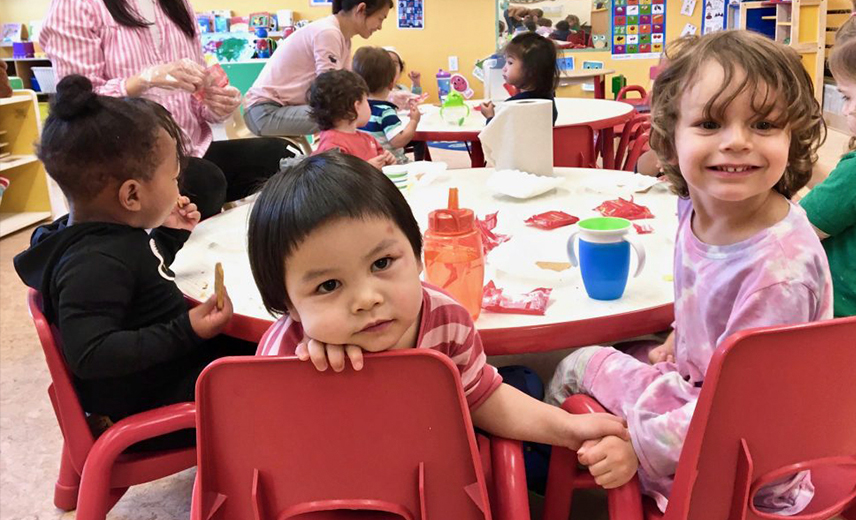MULTIMEDIA REPORT:
UnidosUS Affiliate El Centro de la Raza Has a Model for Making Multilingual Daycare and Pre-K Accessible to All
UnidosUS conducted a site visit to our Affiliate El Centro de la Raza before the Covid-19 pandemic, to learn how it had created a culturally responsive and sustainable early childhood education program. El Centro is currently responding to the crisis, with staff working remotely to continue to provide many of its 43 programs and services, check in with program participants about their needs, and to enroll people in emergency benefits.
UnidosUS is working alongside our Affiliates to ensure critical community work continues during and after this pandemic. In that spirit, read our story on El Centro to learn about the organization’s role in building community and innovating early learning programs in the Seattle area.
On weekday mornings in rainy Seattle, parents representing a variety of ethnic groups and languages can be found hovering over their rubber boot-clad toddlers with umbrellas as they guide them into two locations of the city’s José Martí Child Development Center, sponsored by El Centro de La Raza, an UnidosUS Affiliate. At the main location in the historically Latino Beacon Hill neighborhood, teachers offer warm hugs and Spanish chatter as the children file in. At El Centro de la Raza’s second location in Seattle’s historic Chinatown, kids receive a happy cacophony of Spanish and Mandarin Chinese. Not only do they receive greetings in these languages, they respond in them, and that’s just what these parents are going for.
Videography and editing by Elnatan Melaku Mulugeta. Text and Production by Julienne Gage.
“I’ve always wanted my son to be bilingual. I’ve spoken Spanish a little bit since high school and then moving to another country that speaks Spanish, but I never mastered it,” says Shawna Sandstrom, a White, non-Latina mother whose toddler attends preschool at the Beacon Hill location. “I feel like if he started from when he was a year and a half learning and listening to Spanish, he would easily pick it up just much more than I ever could. So it’s like a huge leg up in society, in life really, to be [proficient in] dual language.”
Dual or multilingual early education is certainly trending and while some critics might call monolingual moms like Sandstrom a “language gentrifier,” moving into programs originally slated for English learners in need of extra linguistic supports, El Centro de La Raza considers these families allies and assets. That’s because since 1975, El Centro de la Raza has been able to sustain its need-based early childhood programming by creating a certain number of slots for monolingual families with resources that can then offset the costs for low-income, multilingual learners. To achieve this balance, families with means pay about $1,400 while families with less means usually pay $200 to $300 per month.
All across the United States, high-quality infant-toddler care has become prohibitively expensive for most families, often times coming at a higher cost than college tuition. But El Centro’s program is self-sustaining and accessible to families of all income levels.
“Families of all backgrounds are very happy to be learning Spanish and our Latino families are very happy to be maintaining their culture and learning their second language,” says Hilda Magana, El Centro de la Raza’s director of early childhood development programs. “It’s very important to have all backgrounds. It’s important how you build or raise the consciousness of people…it actually heightens their sensitivity towards all cultures. It helps us to gain power in terms of the social issues that we care about.”
In recent years, Washington State has been working on expanding the funding and training required for dual language learning, and it has expanded significantly at the K-12 level. In 2017, the state passed HB 1445, which provides grants to districts to create or expand dual language programs at the early learning and K-12 level. This session, the state legislature considered SB6253 and HB 2661, which sought to make big new investments in early learning systems and programs and include substantive dual language components. Both bills did not make it out of their chambers, but SB 6507 recently passed the state legislature and was signed into law by Governor Jay Inslee to strengthen early learning reporting by requiring information related to the racial and ethnic backgrounds of participating providers and children, and analysis of the availability and quality of infant and toddler care.
In this year’s primary debates, presidential candidates have often talked about making early learning and affordable childcare a priority. UnidosUS welcomes this conversation, and we’re also pushing to ensure that as the infant and toddler population diversifies, policies and programs adapt to their needs.

According to a 2017 fact sheet from the Migration Policy Institute, dual language learners represent 33% percent of children aged two and under, 24% of the nation’s three and four-year-olds, and almost 43% of children aged five to eight. Half of all those children are Hispanic.
And yet, 32.5% of the nation’s very young dual language learners (DLL) are enrolled in a pre-K program, about 10% less than their non-DLL peers. With respect to child care cost for families of color, child care expenses consume an average of 14% of their monthly income, putting affordable, comprehensive, and high-quality childcare out of reach for many of these families. For Latino families, these costs average 14.9% of their monthly incomes, and for Black families, these costs average 13.6% of their monthly income.
A recent study conducted by The Education Trust, shows that only 1% of Latino children enrolled in a state-funded ECE program received programs that can be characterized as “high quality.” A new factsheet published by UnidosUS defines “high quality ECE” as multi-level, with program services for families and children that are culturally and linguistically responsive and address the needs of the whole child, including support for learning English while retaining and developing the language spoken at home.
“There’s a continued need to expand access for Latino families into high quality early childhood programs. But it’s equally important that the program expansion, recognizes that children benefit from environments that are culturally and linguistically responsive,” says Bob Stechuk, Director of Early Childhood Education Programs at UnidosUS.
“Dual language programs in early childhood are an important way to help young children maintain and develop their home language and identity. These programs are even more valuable when K-12 immersion programs can pick up where they leave off, really building and developing the valuable assets of bilingualism and biliteracy—which take years to establish—that has lifelong benefits,” says Maki Park, a Seattle-based senior policy analyst focused on early childhood education for Migration Policy Institute.
Preparing Infants and Toddlers for the Global Economy

Business professionals across Seattle say culturally competent, multilingual professionals are in high demand there, precisely because they can speak other languages and adjust to other cultures. Plus, they say multilingualism builds attention and memory skills and fosters an attitude of inquiry and collaboration. The city is home to major tech companies such as Microsoft, Amazon, and Expedia, as well as to a massive medical community servicing patients from across the United States and around the world.
So while Spanish is the most prominent language, and one with a growing worldwide presence, Mandarin Chinese is also key to helping children prepare for the global economy.
“Because of technology companies like Microsoft and Facebook, lots of Chinese people work here, and their students are growing up here,” says Theresa Zhao, a Mandarin Chinese speaker working as an instructor at El Centro’s Chinatown location.
She says most kids in the childcare and pre-school program are just barely starting to form complete sentences in any language, but she’s confident they’ll have plenty of opportunity to practice.
“Lots of Chinese people live around here now, so I think if they know that, if they go shopping here, they can talk with people,” she says, and they can even begin to ask for what they want at a Chinese grocer because they’re learning words such as water, crackers, and the names of fruits that they eat during snack time.
Plus, their comprehension may be growing faster than their verbal skills.
“The bigger ones can copy, if you go and wash your hands and you speak in Mandarin, they can understand a little bit. They can go and follow you,” she says.
But early dual language acquisition can also increase innovative thinking and help children learn to multitask, experts say.
“When children hear language use, they’re processing the sounds of the language, the grammar of the language, and they’re figuring out what words mean. So whether it’s family childcare, center based care in the home or outside of the home, children benefit from daily experiences with language,” Stechuk says.
“Brain development, language development, and identity development are all happening at a rapid pace in children’s earliest years. For young children who speak a language other than English at home, home language support in early childhood are critical to ensure that they are able to maintain and develop critical skills that might otherwise be lost,” says Park. “Extensive research has shown that home language development actually supports the development of English language skills for these children, and the myth that speaking another language hinders English language development has been thoroughly debunked. Most importantly, home language support also empowers parents to continue playing their role as their own young children’s first and most important teachers. When parents feel that their own language and culture are devalued, this can have an enormous negative impact on their confidence and their sense of partnership in their children’s education.”
Tech industry leaders are paying close attention to these issues, and Bhushan Kanal, a Nepali immigrant and vice president of Engineering at Seattle’s cybersecurity firm ExtraHop Networks, Inc. is one of them. As a child in Kathmandu, he was exposed to his native Nepali language, as well as Hindi, Pashtun, Urdu, and English. As soon as he finished his bachelor’s in computer science at Whitworth University in Spokane, Washington, in 1995, he found himself working in Seattle at Microsoft. Today, he’s a parent of two multilingual children, and he says he’s actively recruiting diverse, multilingual talent for ExtraHop Networks. “I have noticed a strong correlation between a multilingual person and their propensity to be curious, to be open to other ideas, and to listen,” Kanal says. “In a technical field, those are extremely important skills, and ones that also pay a significant emotional dividend.”
Social and Emotional Wellbeing

That’s exactly the notion El Centro is banking on, and it hopes that building tolerance and empathy will equip their students to be comfortable in various socioeconomic and cultural environments. By doing so, they’ll be better able to build relationships with a diverse group of peers and advocate for themselves and each other as they move into adulthood.
According to the early childhood advocacy organization ZERO TO THREE, babies begin experiencing a range of emotions ranging from joy and sadness to interest, anger, and excitement well before they can utter a word. Through Think Babies, ZERO TO THREE is partnering with leading state organizations across the country to encourage policymakers to focus on issues that impact infants and toddlers, including social and emotional development. Currently, about 10 to 14% of children under five have experienced a serious emotional disturbance, and the chances of that are greater among children in homes or communities faced with significant stressors such as poverty, parental loss, violence, or substance misuse. In fact, more than 8% of infants and toddlers nationwide have already had two or more adverse experiences.
“Policymakers can strengthen the foundation being built for infants and toddlers by investing in the continuum of services that support the prevention of infant and early childhood mental health problems, as well as the provision of treatment for infants and young children suffering from mental health disorders,” says Lindsay Usry, Director of Infant and Early Childhood Mental Health Strategy at ZERO TO THREE.
At the advocacy level, El Centro is a strong proponent of that continuum. Meanwhile, within the confines of its own grassroots programming, that foundation starts with ensuring early educational spaces are culturally relevant, says Marta Díaz, a preschool teacher at El Centro’s Beacon Hill location.That can start with something as symbolic as using potpourri devices that emit, friendly and familiar aromas like pumpkin and cinnamon. The books and the pictures should also remind children of themselves and of their potential, notes Díaz.
For example, she says even at this early age the children can walk down the halls of their schools and identify pictures of civil rights activists such as Martin Luther King Jr. and Cesar Chavez.
“They’re able to verbalize what they did and what they fought for,” says Díaz. “They’re learning to speak out, they’re learning to defend themselves, and they’re learning love. It’s about sharing. It’s about caring. It’s about negotiating.”
Díaz also says El Centro’s decades-long early childhood education program, and its commitment to keeping a balance of students—currently about 50% Spanish speakers—is vital in today’s tense political climate.
“We’re being deported. We’re being put up against each other, and I think it’s about time for somebody to bring all of us together,” says Díaz.
Parents like Sandstrom couldn’t agree more.
“Besides just having a language in common, just knowing and sharing culture and perspective and having an appreciation for other people with completely different cultures is phenomenal,” she says. “That value is what’s going to make him the well-rounded person that I want him to grow into,” says Sandstrom.
Meanwhile at El Centro’s second location in Seattle’s Chinatown, toddlers as young as three can be found sitting together at tiny tables shouting out the names of things written in Chinese characters on flashcards. African American, White, Meso-American, Asian, or Native American, for most this isn’t likely their first language, and yet they seem quite confident they’ll master it together. Some even held hands as they named the character on the flashcard to each other.
Tieying Li, another Mandarin-speaking instructor at El Centro’s Chinatown location, says this kind of togetherness will be key for jobs in a city rules by technology companies like Microsoft and Facebook, which attract workers from around the world, and most notably China.
“If they know another language, they can make a good relationship with a co-worker,” she says.
Magana couldn’t agree more. In fact, she says she loves to watch how the kids teach each other their home languages through game playing and motions.
“Those are good examples that we can all live together in harmony to create a better society,” she says. “The children really love each other.”
Author Julienne Gage is an UnidosUS senior web content manager and the editor of ProgressReport.co.

ZERO TO THREE created Think Babies™ to make the potential of every baby a national priority. Funding partners for Think BabiesTM include the Robert Wood Johnson Foundation, which supports public education aspects, and the Perigee Fund, which supports public education and advocacy aspects. Learn more at www.thinkbabies.org.

